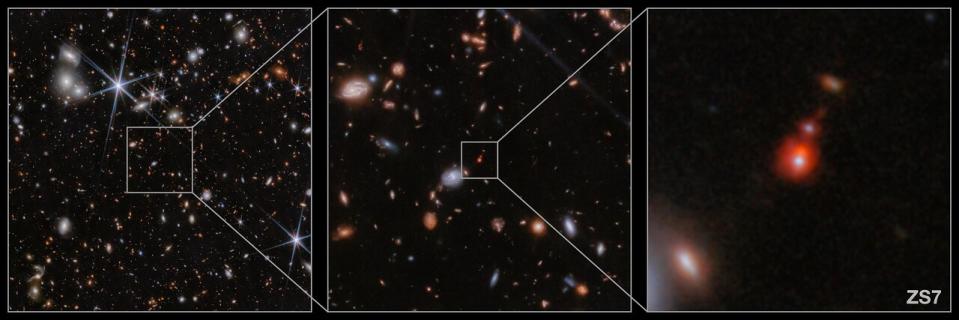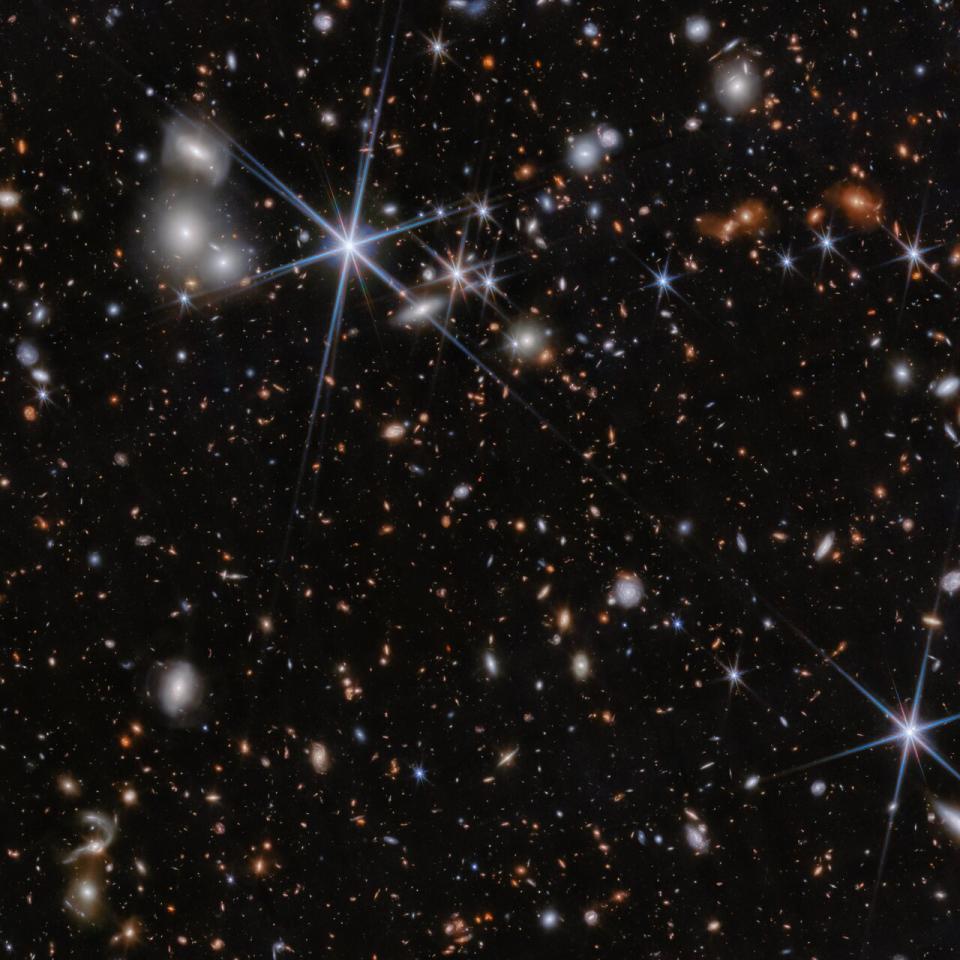Using the James Webb Space Telescope (JWST), astronomers have discovered the most distant merger between supermassive black holes ever detected.
The colliding black holes at the core of merging galaxies are so far away that the collision appears as if it were happening just 740 million years after the Big Bang when the universe was 13.8 billion years old a fraction of its current age .
Astronomers have long suspected that supermassive black holes with masses millions or even billions of times that of the sun, found at the core of most large galaxies, were responsible for driving cosmic evolution. This new JWST result suggests that supermassive black holes have been in the driving seat almost since the beginning of time.
The JWST is regularly revealing supermassive black holes in the infant universe, which has been a problem because the merger process that facilitates their growth should take periods of more than a billion years. These findings could also help solve the troubling mystery of how supermassive black holes grew to massive masses so early in the universe’s history.
Related: Fall into a black hole in mind-bending NASA animation (video)

“Our results suggest that mergers are an important means by which black holes can grow rapidly, even in the cosmic dawn,” research leader and University of Cambridge scientist Hannah Übler said in a statement. “Together with Webb’s other findings on active, supermassive black holes in the distant universe, our results also show that supermassive black holes have been shaping the evolution of galaxies from the very beginning.”
When quasars collide
Supermassive black holes are gobbling up matter at the core of what astronomers call active galactic nuclei (AGN). From their central locations, these bright black holes power bright emissions called quasars that can often outshine the combined light of all the stars in the rest of the galaxy around them.
These electromagnetic emissions have distinctive characteristics that allow astronomers to determine that they come from feeding supermassive black holes. These features can only be determined by telescopes in orbit around Earth, and to see them for the most distant quasars requires the extremely powerful and sensitive infrared eye of the JWST.
To investigate merging quasars in the early universe, Übler and his colleagues zoomed in on a galaxy system about 12 billion light-years away called ZS7 with JWST’s Near-InfraRed Spectrograph (NIRSpec).
“We found evidence of very dense gas with rapid motions in the vicinity of the black hole, as well as hot and highly ionized gas illuminated by the energetic radiation typically produced by accreting black holes. [feeding] episode,” explained Übler.


The team determined that one of the supermassive black holes involved in this merger had a mass equal to about 50 million suns. Although they suspect that the second supermassive black hole has a similar mass, scientists have not been able to confirm this definitively due to dense gas surrounding it.
“The stellar mass of the system we studied is similar to that of our neighbor, the Large Magellanic Cloud,” said team member Pablo G. Pérez-González, a scientist from the Centro de Astrobiología (CAB). “We can try to imagine how the evolution of the merging galaxies might be affected if every galaxy had one supermassive black hole as big or bigger than our own in the Milky Way.”


When the two supermassive black holes eventually merged, they would have set the fabric of ring space with tiny ripples called gravitational waves. These will exit the collision at the speed of light and could be detected by the next generation of gravitational wave detectors.
This could include the first space-based system, the Laser Interferometer Space Antenna (LISA), an arrangement of three spacecraft being developed by NASA and the European Space Agency (ESA) and due to launch in 2035.
“The JWST results are telling us that LISA should be able to detect lighter systems much more often than previously thought,” said Nora Luetzgendorf, ESA’s Lead Project Scientist for Liza. “It will most likely adjust our models for LISA rates in this mass range. This is just the tip of the iceberg.”
RELATED STORIES:
— How do some black holes get so big? The James Webb Space Telescope may have an answer
— The brightest quasar ever seen is powered by a black hole that eats ‘a sun a day’
—Black hole-like ‘gravastars’ could be stacked like Russian tea dolls
Even before the launch of LISA, the JWST will continue to investigate supermassive black holes in the near future. Starting this summer, a program in Cycle 3 operations of the $10 billion telescope will examine the relationship between supermassive black holes and their host galaxies in the first billion years after the Big Bang. This will include search and merge attributes.
This could tell scientists at what rate supermassive black holes collide and whether this is enough to explain their rapid growth in the early cosmos.
The team’s research was published on Thursday (May 16) in the journal The Monthly Notices of the Royal Astronomical Society.